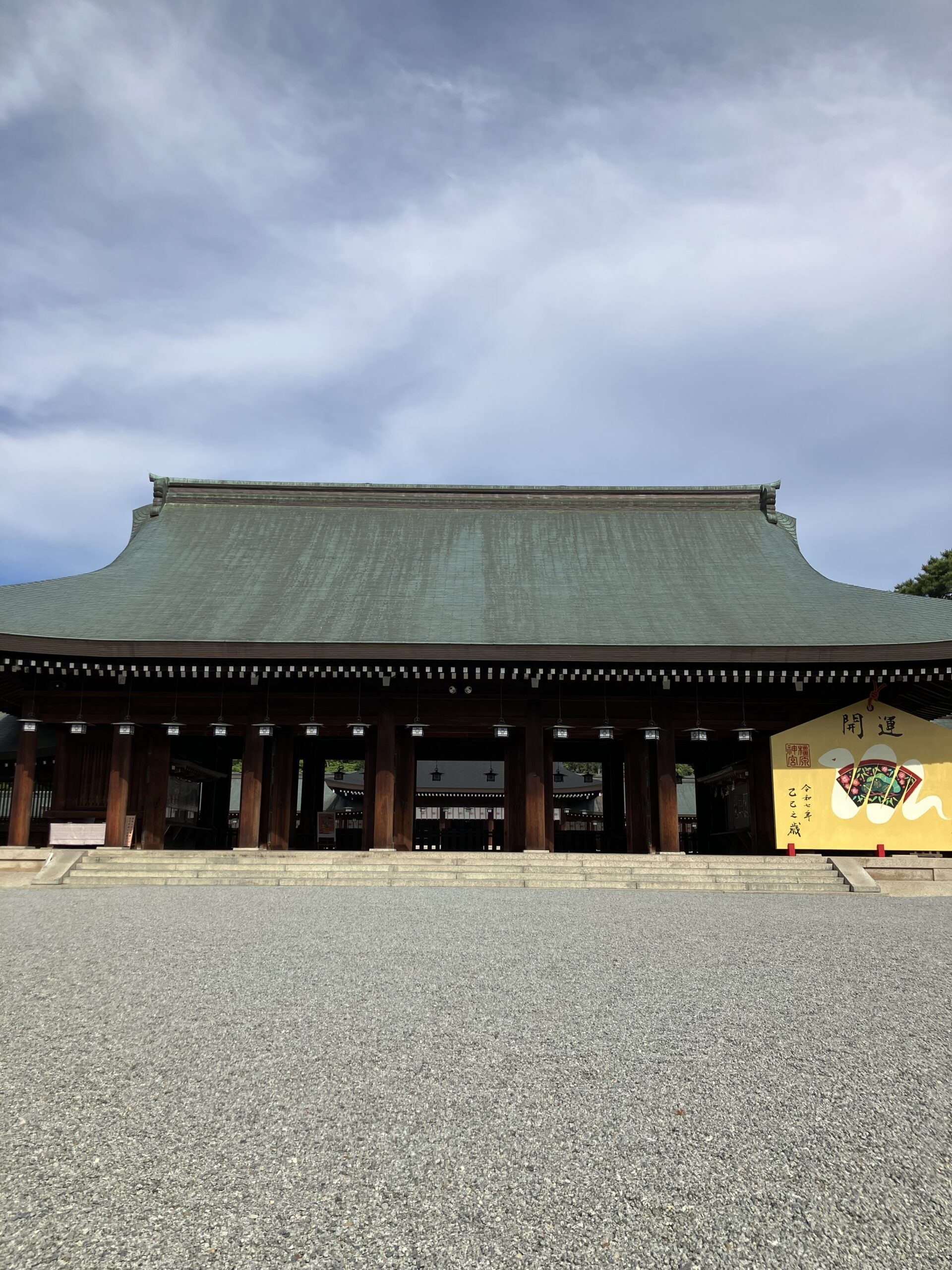If you feel like going there, please check out the nice and close hotel from 👇
Nestled in the heart of Nara, Kashihara Jingu offers visitors a rare chance to step into the birthplace of Japan’s imperial history. This sacred site is where legend meets living culture, making it a must-visit destination for travelers seeking more than just sightseeing.
- Where Japan Was Born: The Sacred Roots of Kashihara Jingu
- Meiji Period Architecture: Imperial Grandeur in Every Detail
- Nature and Serenity: Exploring Mount Unebi and the Sacred Grounds
- Don’t Miss: The Shrine’s Must-See Attractions
- Experience Japanese Tradition: Festivals and Ceremonies
- Plan Your Visit: Travel Tips for Kashihara Jingu
- Why Kashihara Jingu Should Be on Every Traveler’s List
Where Japan Was Born: The Sacred Roots of Kashihara Jingu
Kashihara Jingu is not just a shrine; it’s where Japan’s imperial journey began. According to ancient records like the Nihon Shoki, this is where Emperor Jimmu, Japan’s first emperor, ascended the throne in 660 BC. As you walk through its peaceful grounds, you’re stepping into history—a place that has stood for over 2,600 years. That deep sense of origin makes Kashihara Jingu a powerful destination for anyone curious about Japan’s foundations.
Meiji Period Architecture: Imperial Grandeur in Every Detail
Built in 1890 by imperial order, Kashihara Jingu’s architecture reflects both traditional Shinto style and the dignity of Japan’s royal heritage. The buildings were relocated from the Kyoto Imperial Palace, bringing with them a deep cultural significance. Walking under the massive cypress roofs, admiring the simple yet majestic designs, visitors feel an authentic connection to Japan’s timeless imperial traditions.
Nature and Serenity: Exploring Mount Unebi and the Sacred Grounds
Located at the base of Mount Unebi, one of the famous Yamato Sanzan (Three Mountains of Yamato), the shrine is surrounded by nature’s quiet beauty. Seasonal blooms, tall ancient trees, and koi ponds create a perfect escape from busy city life. Whether you’re visiting in spring for cherry blossoms or autumn for colorful leaves, Kashihara Jingu offers peace and beauty year-round.
Don’t Miss: The Shrine’s Must-See Attractions
The Grand Torii Gate and Forested Approach
A towering torii gate welcomes visitors to this sacred site. As you walk along the tree-lined path, the combination of ginkgo and Japanese oaks creates a natural tunnel that changes with every season, offering spectacular photo opportunities.
Fukuda Pond and Nagayama Inari Shrine
Stroll around the calm waters of Fukuda Pond, where cherry blossoms reflect beautifully in spring. Don’t forget to visit Nagayama Inari Shrine nearby, a hidden corner offering both beauty and quiet spiritual energy.
Honden, Heiden, and Kagura-Den
The main structures—including the honden (main sanctuary), heiden (offering hall), and kagura-den (dance pavilion)—are masterpieces of Shinto craftsmanship. Each building plays an important role in ongoing religious rituals and imperial ceremonies.
Experience Japanese Tradition: Festivals and Ceremonies
Kigensai (National Foundation Day) – February 11
Each year on February 11, Kashihara Jingu celebrates Japan’s founding with Kigensai, a grand festival that honors Emperor Jimmu’s legendary ascension. Processions, traditional music, and solemn rituals create an unforgettable experience.
Jimmu-tennō-sai – April 3
Held every spring, this ceremony honors the first emperor with sacred dances and offerings. Visitors can witness Shinto traditions that have been preserved for centuries.
Spring and Autumn Festivals
Throughout the year, Kashihara Jingu hosts seasonal festivals that reflect the natural cycles of Japan. Taiko drumming, kagura dance performances, and colorful parades make these celebrations vibrant and deeply cultural.
Plan Your Visit: Travel Tips for Kashihara Jingu
Easy Access from Major Cities
Located just a short walk from Kashiharajingu-mae Station on the Kintetsu Line, Kashihara Jingu is easily accessible from Nara, Osaka, and Kyoto. Ample parking is also available for those traveling by car.
Best Time to Visit
While the shrine welcomes visitors year-round, spring (March to April) and autumn (October to November) offer the most breathtaking scenery. February’s Kigensai is also highly recommended for those wanting to witness cultural events.
Admission and Etiquette
Entry to the shrine is free. When visiting, remember to bow before entering through the torii gate, purify your hands at the water basin, and maintain respectful behavior within the shrine grounds. Don’t forget to purchase an omamori (good luck charm) or collect a goshuin (shrine stamp) as a meaningful souvenir.
Why Kashihara Jingu Should Be on Every Traveler’s List
In conclusion, Kashihara Jingu offers something truly unique: a combination of deep history, breathtaking nature, living tradition, and peaceful spirituality. Whether you’re a history lover, cultural explorer, or simply seeking a quiet moment away from modern life, this sacred place welcomes you with open arms. Visit Kashihara Jingu—and stand where Japan itself was born.



コメント